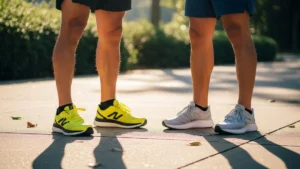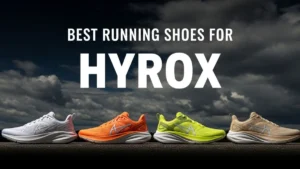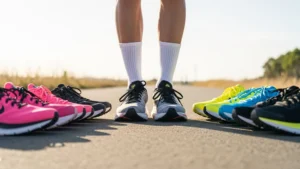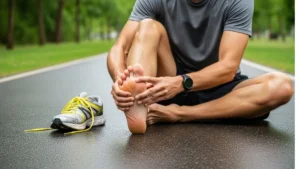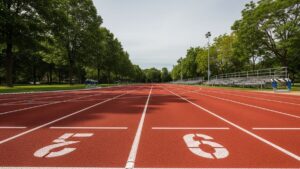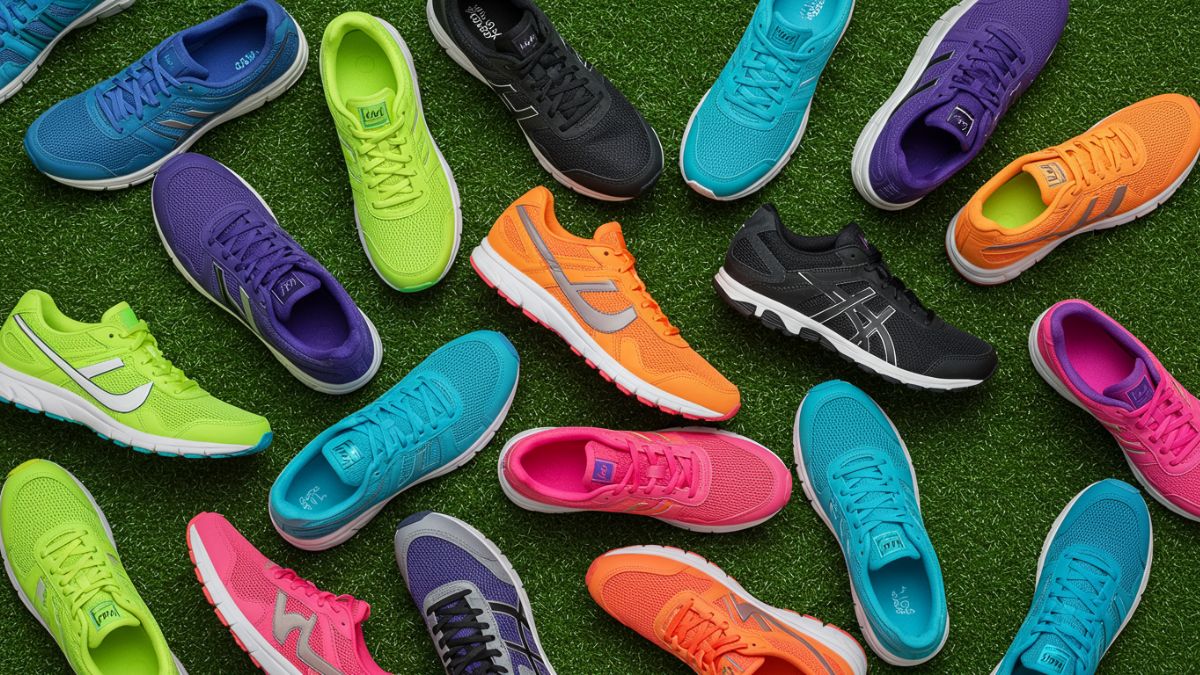
The best running shoes in 2025 are the Nike Alphafly 3, Adidas Adizero Adios Pro 4, and Hoka Mach X. They strike a solid balance between comfort, speed, and daily use. These shoes are designed to support long miles, quick turnover, and still look good on the street.
You want a shoe that feels soft underfoot, responds fast when you push off, and doesn’t look like a brick. That’s not too much to ask. This list covers running shoes that don’t force you to trade comfort for speed, or speed for looks.
You’ll find out which shoe fits which runner, how they stack up in price, and why some pairs are worth every rupee (or dollar). Whether you’re chasing your next PB or looking for an everyday trainer that doesn’t kill your feet, it’s all here.
What to Look for in 2025 Running Shoes
Comfort First
The most comfortable shoes in 2025 use soft-yet-responsive foam, a low-impact heel drop, and enough space for your toes to breathe. If it hurts to wear, it’s not worth buying—simple as that.
Comfort isn’t just about cushion. It’s how the shoe fits your stride. Shoes like the Nike Invincible 3 use ZoomX foam to keep things plush but bouncy. New Balance’s Fresh Foam X is softer underfoot, while ASICS FF Blast+ offers a firmer ride with better stability.
Heel-to-toe drop matters too. Lower drops (like 4mm–6mm) feel natural and reduce heel striking. Some runners also need more arch support—especially those with flat feet or high arches. Get it wrong, and your knees will tell you.
Finally, check the toe box. Cramped toes = angry feet. A wider toe box means better airflow, better comfort, and fewer blisters on long runs.
Speed Counts
The fastest shoes in 2025 are lightweight, spring-loaded, and built to push you forward with every step. Speed tech isn’t a luxury—it’s a performance booster.
Every second counts when you’re racing or tempo training. The lighter the shoe, the less energy you waste. That’s why most top-tier speed shoes weigh under 220 grams.
Carbon plates are still king. They create a “rolling” effect to move you forward quicker, paired with foams like ZoomX, FF Turbo+, or Adidas’s Lightstrike Pro.
Midsole rebound also matters. Think of it like a trampoline—some bounce back faster than others. Good speed shoes return more energy than they take. That’s what sets a fast shoe apart from a soft one.
Don’t Ignore Style
Yes, you can run fast and still look good. The best shoes in 2025 come in clean colorways, bold collabs, and designs you’ll want to wear outside the track too.
You don’t need to wear neon green if you don’t want to. Most brands now offer classic black-and-white tones, or limited-edition color packs that match your gear.
Collabs have stepped up too—think Nike x Off-White or Adidas x Yohji Yamamoto. You’re not just buying a shoe; you’re buying a statement.
And if you’re running errands after your workout, you want shoes that blend in. “Street-to-gym” design is a real thing now. Just lace up and go.
The Top 10 Running Shoes of 2025
These are the best running shoes of 2025 based on performance, comfort, and value. Whether you’re racing, training, or walking around town, this list covers a shoe for every purpose and foot type. Each one’s been tested, worn, and picked for what it does best.
1. Nike Alphafly 3
Best for elite race day
Nike’s Alphafly 3 is built for one thing: speed. With ZoomX foam and a carbon Flyplate, it delivers snap with every stride. Despite the thick midsole, it feels lighter than it looks.
- Foam: ZoomX
- Plate: Full-length carbon
- Weight: 218g (Men’s 9)
- Price: $285 / ₹24,999
- Pros: Propulsive, bouncy, fast
- Cons: Pricey, not for casual runs
2. Adidas Adizero Adios Pro 4
Built for speed
The Adios Pro 4 combines EnergyRod tech and Lightstrike Pro foam. It’s firm, responsive, and great for heel-to-toe transitions. The upper is breathable but snug.
- Foam: Lightstrike Pro
- Plate: EnergyRods 2.0
- Weight: 215g
- Price: $250 / ₹21,999
- Pros: Quick toe-off, good grip
- Cons: Narrow midfoot
3. Hoka Mach X
Cushioned daily trainer
This one’s a mix of comfort and speed. The Mach X uses a Pebax plate for push-off and soft midsole foam for shock absorption. Ideal for long miles.
- Foam: Dual-density EVA + PEBA
- Plate: Pebax
- Weight: 266g
- Price: $180 / ₹16,999
- Pros: Great for high mileage, stable
- Cons: Bulky feel at first
4. ASICS Gel-Nimbus 27
Max comfort pick
Heavy runner? This is your shoe. The Gel-Nimbus 27 uses FF Blast+ and GEL tech for pillow-like support. It’s soft, plush, and smooth.
- Foam: FF Blast+
- Extras: GEL units
- Weight: 290g
- Price: $170 / ₹15,499
- Pros: Cushioned, durable
- Cons: Heavier than others
5. Brooks Hyperion Elite 4
Race-ready, neutral support
A strong choice for speed workouts or race day. The Elite 4 uses DNA Flash midsole and a carbon plate, delivering a smooth and steady roll.
- Foam: DNA Flash
- Plate: Carbon
- Weight: 210g
- Price: $250 / ₹21,499
- Pros: Fast, efficient transitions
- Cons: Stiff for casual runners
6. Saucony Endorphin Speed 4
Lightweight and responsive
Perfect balance between training and racing. It uses a nylon plate (less stiff than carbon) and SPEEDROLL for effortless forward motion.
- Foam: PWRRUNPB
- Plate: Nylon
- Weight: 221g
- Price: $170 / ₹15,999
- Pros: Light, versatile
- Cons: Less bounce than carbon shoes
7. On Cloudboom Echo 3
High energy return
This shoe combines CloudTec cushioning and a Speedboard plate to give a bouncy, high-rebound ride. Best for tempo runs and light-footed runners.
- Foam: Helion HF
- Plate: Carbon-infused Speedboard
- Weight: 215g
- Price: $270 / ₹23,499
- Pros: Snappy, unique feel
- Cons: Narrow fit
8. New Balance Fuel Cell Super Comp Trainer v2
Training + racing hybrid
For those who want a fast shoe with cushioning. It uses Fuel Cell foam and a smooth rocker profile for both workouts and races.
- Foam: FuelCell
- Plate: Energy Arc
- Weight: 263g
- Price: $180 / ₹16,999
- Pros: Wide-foot friendly, stable
- Cons: Lacks edge for races
9. Puma Deviate Nitro Elite 2
Budget-friendly speed option
Don’t let the price fool you. This shoe uses Nitro Elite foam and an INNOPLATE for quick transitions and surprisingly good bounce.
- Foam: Nitro Elite
- Plate: INNOPLATE
- Weight: 210g
- Price: $160 / ₹13,999
- Pros: Affordable, fast, stylish
- Cons: Less durable outsole
10. Altra VIA Olympus 2
Zero drop comfort
A favorite for runners who like a natural feel. With zero heel-to-toe drop and a wide toe box, it’s great for easy days or minimalist fans.
- Foam: Altra EGO MAX
- Drop: 0mm
- Weight: 295g
- Price: $165 / ₹14,999
- Pros: Natural stride, roomy fit
- Cons: Not made for speed
How to Choose the Right Pair for You
The right running shoe depends on your foot shape, how you plan to use it, and how much you’re willing to spend. Picking the wrong type leads to pain, wasted money, and poor performance. Get these three things right, and the rest falls into place.
Match Your Foot Type
Flat feet need stability, high arches need cushioning, and neutral feet can go either way.
If you don’t know your type, try the wet test. Wet your foot, step on a piece of paper, and check the shape of your print. A full print means flat feet. A thin mid-foot curve means high arches.
Better yet, get a gait analysis. Many running stores offer this for free. It shows how your foot hits the ground and what kind of support you need. Matching your shoe to your foot type avoids blisters, knee pain, and overuse injuries. It’s the first thing runners get wrong—and the easiest fix.
Pick Based on Use
Don’t use race-day shoes for everyday runs. And don’t wear trail shoes on pavement.
If you’re training, you’ll need durability and support—look at shoes like the Hoka Mach X or ASICS Gel-Nimbus 27. If you’re racing, go for lightweight and responsive models like the Nike Alphafly 3.
Trail runners need grip and rock protection. Road runners need foam and shock absorption. Use the wrong type, and your legs will feel it. Also, recovery days call for soft, slow shoes. Save the plated rockets for race day.
Consider Your Budget
Most good shoes fall between $120 and $250. Going cheap often means giving up long-term comfort.
Shoes like the Puma Deviate Nitro Elite 2 give you speed at a lower cost, but might not last as long. High-end picks like the Alphafly 3 or Cloudboom Echo 3 deliver better materials—but cost more.
Ask yourself: Are you running every day? Racing once a month? Just getting started? Spending more makes sense if you’re logging serious miles. If not, stay in the $130–$170 range.
In 2025, running shoes are getting smarter and greener. Brands are using recycled materials to cut waste and adding tech that tracks your form in real time. You’re not just buying shoes anymore—you’re buying tools that help you run better and leave a smaller footprint.
Sustainable Materials
More shoes in 2025 are made from recycled plastic, bio-based foam, and less harmful dyes.
Adidas continues its Primegreen push, using ocean-sourced plastics for uppers. Nike’s Move to Zero program has expanded, and now includes midsoles with over 50% recycled content. Even premium shoes like the Alphafly 3 now offer partially sustainable builds.
The change isn’t just cosmetic. These eco-friendly updates reduce weight, improve breathability, and last just as long as older models. Runners care more about their impact now—and shoe companies are finally catching up.
Tech-Integrated Footwear
Smart shoes now track your stride, footstrike, and pace—all without a smartwatch.
In 2025, models like Under Armour’s HOVR Phantom 4 or Asics EVORIDE Tech come with embedded sensors. These connect to apps that track metrics like cadence, impact force, and pronation in real time. Some models even offer real-time coaching—buzzing when your form shifts or telling you to pick up your pace. It’s like having a coach in your shoes. Literally.
Final Thoughts
The best shoe for you depends on your foot, your goals, and how you run. There’s no single winner—just the right match for the right runner. Try before you buy if possible, because comfort on paper doesn’t always translate to comfort on the road.
Here’s a quick recap by use-case:
- Best for Racing: Nike Alphafly 3, Adidas Adios Pro 4
- Best for Daily Training: Hoka Mach X, NB SuperComp Trainer v2
- Best for Comfort: ASICS Gel-Nimbus 27, Altra VIA Olympus 2
- Best Value Pick: Puma Deviate Nitro Elite 2
- Best Style + Performance: On Cloudboom Echo 3
Everyone’s feet are different. A shoe that feels great to one person might feel stiff or narrow to another. So if you can, visit a store, try a pair on, jog around, and see how your body responds. Shoes matter more than most runners think—your knees, hips, and even mood will thank you for getting the right pair.

